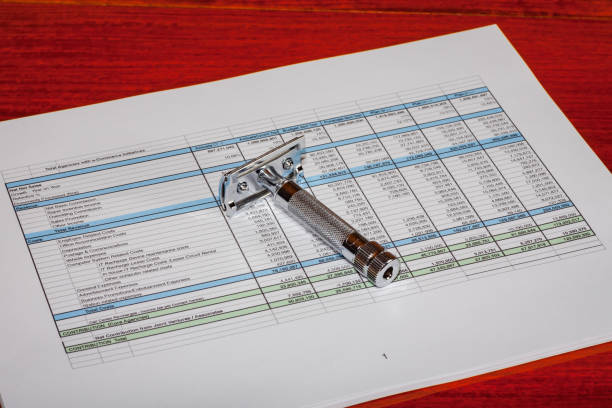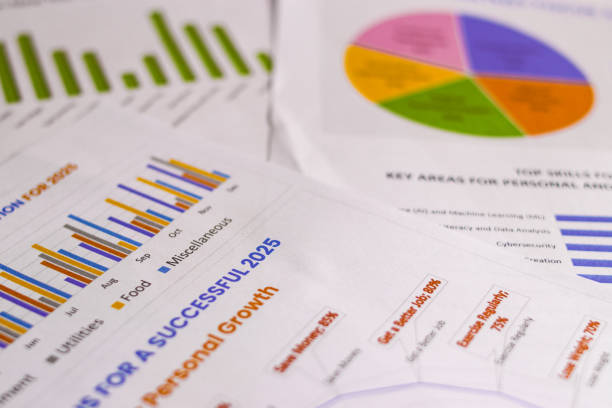How to Create a Budget Spreadsheet
The creation of an organized budget represents the primary vital step to build financial control while achieving financial improvement. A budget spreadsheet tracks expenses and helps create expense plans to evaluate financial status regarding wealth levels. Budget spreadsheets serve as highly effective, user-friendly, and adaptable solutions when it comes to budget control despite other budget-preparing software and applications available in the market. The article will introduce you to budget spreadsheet creation methods as well as supply supporting guidelines and handle commonly asked questions.
Why You Need a Budget Spreadsheet
Keeping track of cash management tasks seems hard before you divide them by category and then perform regular spending checks, which results in making the whole process much simpler. Your budget spreadsheet provides a summary of your monetary income with associated expenses while functioning specifically to manage your financial activities. A budgeting spreadsheet provides the necessary solution if you want to buy something at budget level, need help paying your bills, or seek to start budgeting.

When budgeting with spreadsheets, you achieve complete independence to create the worksheet based on your specific needs. Sample budgets. Proper budgeting produces an essential financial instrument that shows how specified financial goals can be met in both short-term and long-term periods.
Step-by-Step Guide: How to Create a Budget Spreadsheet
Making the correct budget spreadsheet seems hard at first, but proper planning enables users to build them efficiently and easily. A pro-amelioration colonization framework follows these particular directions that consist of subsequent steps.
Set Up Your Spreadsheet
Merchandisers must initiate their desired spreadsheet application from Excel or Google Sheets or any alternative program that suits users. A new spreadsheet file should be opened and named as Budget for 2025.
The spreadsheet needs to display a clean format with no unnecessary elements. The top row should include these headings when arranging the data:
Each business activity should contain its unique date during its operation.
Subcategory: The detail of the expense, such as food, accommodation, power and water bills, etcetera.
Description: A brief description of the transaction.
Amount: The cost of the expense or income.
The business activity functioned as an income source, or it represented an expense within the business operations.
Organize Your Income
The primary requirement is to establish separate sections that cover all available income sources. The journal section only allows your wages and allowances together with freelancing earnings as well as regular cash from multiple sources while any recurring money counts. The frequency of payments should accompany the expense amounts since payments happen at different times during weekly, biweekly, or monthly periods.
List All Your Expenses
Categorization of all expenses becomes the recommended step in axiom number six. Typical categories may include:
Food subsidies together with transport costs form a single category that also includes housing rent and mortgage payments and water expenses as well as electricity bills and property tax.
Various forms of transportation costs are covered under car loans/rebates, fuel purchases, public transit payments, and car insurance costs.
Food: groceries, dining out, snacks.
Entertainment: Movies, subscriptions, and hobbies.
Insurance: Health, car, life, etc.
Debt Payments: Loans, credit card payments, student loans.
The identification of spending frequency should determine which categories need addition and which need removal. Improved clarity of individual financial behavior occurs through specific financial category definitions.
Record Your Transactions
Every transaction needs to appear on a sheet that incorporates separate columns for storing transaction details. Every recorded purchase needs the date along with the category tagged with an explanatory note followed by the spending amount. Any received income needs the same attention through written documentation. A properly managed budget requires that the spreadsheet maintain current information for efficient control.
Track Your Totals
Every calendar month requires you to determine your money expenditure in relation to your monthly income by calculating all your income sources and all your monthly expenses. Learning your financial situation becomes possible through this approach, which allows you to evaluate monetary inflows compared to outflows for evaluating your financial standing. The spreadsheet can easily benefit from a built-in formula system for conducting automatic total calculations.
Using the SUM function allows you to calculate total figures of data inside the “Amount” column. The spreadsheet system needs to update all values automatically each time you enter new data into any of the records.
Analyze and Adjust
An analysis of monetary movements toward your personal account starts following your understanding of cash flow amounts. Currently, do you find yourself within this last stage of the credit cycle since your spending surpasses your income? Do you identify sections where cutting costs would be possible? An essential tip states that if any particular category exceeds its budget, it is advisable to decrease its planned financial amount. When eating out proves costly, you should establish spending limits for restaurants during the following months.

Tips for Maintaining Your Budget Spreadsheet
While tracking your budget after setup takes effort and patience, it becomes natural to log information as time progresses. These following pieces of advice might help you achieve your objective:
Financial Target: Establish both the short- and long-term objectives for the financial aspect. Different financial targets you could establish include plans to support a holiday vacation or pay back loans and build emergency reserves because these types of intentions drive motivation.
Consistency matters when updating the spreadsheet since you should do it once per day or, at a minimum, once per week. Your financial management will stay on track through this approach, and you will not experience billing stress at the end of the month.
When using a spending diary for one month, people should evaluate how their budget has changed since they started tracking their money. Saving cash has become your main priority. Do I have enough resources to cut costs throughout the following month?
The cells with unwanted values exceeding specific times can benefit from conditional formatting application. The spreadsheet design provides quick access to crucial parts of the budget that need attention.
Benefits of Using a Budget Spreadsheet
A budget spreadsheet provides better benefits over other budgeting applications, including the following advantages:
A person can create their budget precisely how they want through this feature, which makes it adaptable.
Budget spreadsheets function without any current fees due to their classification as a fundamental free basic tool in the system.
The user maintains full autonomy to design both the form structure and the data entry format in this tool, which makes expense tracking for particular items easier.
One can easily use spreadsheets because they offer simple navigation yet maintain sufficient complexity to track their spending activities.

Conclusion: How to Create a Budget Spreadsheet
All individuals who want to reach their monetary targets need to develop How to Create a Budget Spreadsheet capabilities. People who set goals and identify their financial sources together with the different expense types and monitor their expenses daily gain a deeper understanding of their financial situation. The method of keeping and strengthening your financial state relies on maintaining regularity and adapting well.
Turning to financial management through the development of budget spreadsheets proves itself as the most useful instrument for everyone beginning their budget setup process or seeking budget improvements. Managing your money properly and creating excellent decisions about your future finances become achievable with the help of this tool. That is all about: How to Create a Budget Spreadsheet capabilities.
FAQs: How to Create a Budget Spreadsheet
Users should change their budget template at what frequency?
The budget spreadsheet requires adjustment at least once weekly. The difficult-to-track transaction history and missed payments will no longer stay behind because of this system.
Totally practical is having an elementary budget template to handle your organization’s financial costs. Is it?
Yes! The budget chart can function for both business and personal finance because of civilizing needs. The necessary requirement involves establishing two separate columns that track business expenses and business income while designing nominal categories based on the business specifications.


